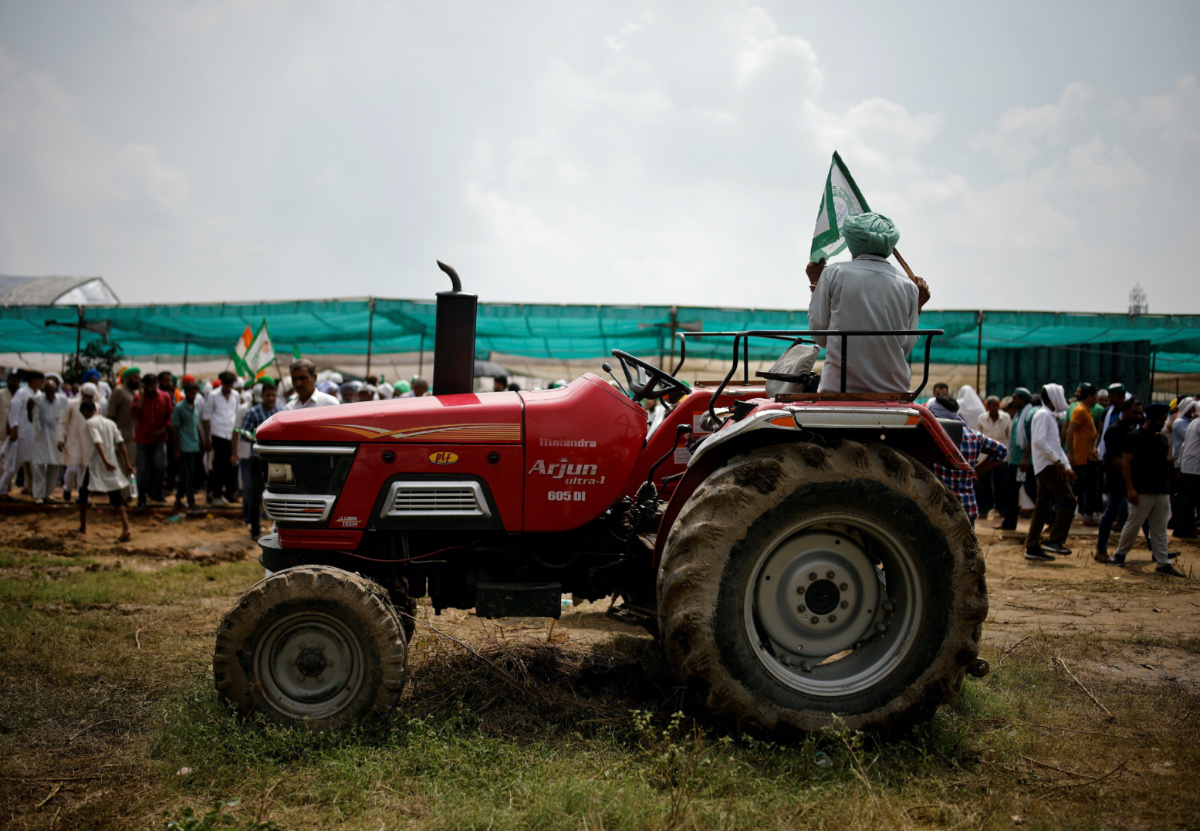New Delhi, India
Reuters
A group of influential farmer leaders ratcheted up pressure on Prime Minister Narendra Modi’s government to roll back three new farm laws by organising a mammoth rally in India’s most populous state Uttar Pradesh last week.
After the successful mass meeting – the biggest rally yet in a months-long series of demonstrations to press for repeal of the laws – farm union leaders now plan to step up protests in Uttar Pradesh ahead of the state assembly election next year.

A farmer sits on a tractor as he attends a Maha Panchayat or grand village council meeting as part of a protest against farm laws in Muzaffarnagar in the northern state of Uttar Pradesh, India, on 5th September. PICTURE: Reuters/Adnan Abidi
Protesting farmers say the laws, introduced in September last year, would erode a longstanding mechanism that ensures farmers a minimum guaranteed price for their rice and wheat, but the government says this will help growers get better prices.
How did a farmers’ protest turn into a pan-Indian movement?
Almost immediately after parliament cleared the farm laws late last year, tens of thousands of farmers from grain-growing Punjab and Haryana states trudged towards the capital New Delhi. Stopped by authorities from entering India’s capital, growers have camped on highways to New Delhi, in India’s longest-running farmers’ protest against the government.
Several rounds of talks between the government and farm union leaders failed to break the deadlock. Some government ministers and leaders from Modi’s ruling Hindu nationalist Bharatiya Janata Party initially dismissed farmers’ protests as demonstrations by a handful of rice and wheat growers only from Punjab and Haryana.
As the days went on, farmers from other parts of the country galvanized into action by either joining the protest near New Delhi or organising a series of demonstrations in different states.
Other than calling for the withdrawal of the laws, farm union leaders put forth another demand – a law that would force the government to buy all farm produce at a state-set guaranteed price. The new demand gained traction among farmers from across the country, beyond Punjab and Haryana – known as India’s grain belt.
Why do farmers want to intensify their movement in Uttar Pradesh?
After farmers’ protests became more broad-based, union leaders turned their gaze to Uttar Pradesh, home to 240 million people.
Modi’s BJP came to power in Uttar Pradesh in 2017, and the state assembly election is due by early next year.
Farm union leaders plan to paint the BJP as an anti-farmer party ahead of the state assembly election, especially in western Uttar Pradesh, where agriculture is a mainstay.
According to protesters, farmer leaders will go to every city and town in Uttar Pradesh to convey that Modi’s government has overlooked growers’ interests.
The election in Uttar Pradesh, which sends 80 lawmakers, or more than any other state, to parliament in New Delhi, is seen as a barometer of the popularity of the federal government.
While the BJP is expected to pull out all the stops to hold on to the state, farmer groups will try to hit the ruling party where it hurts most.
Have Hindu and Muslim leaders of Uttar Pradesh come together to oppose farm laws?
Farmer leader Rakesh Tikait, a former Modi ally from Uttar Pradesh, has turned the protest from Punjab and Haryana into a broader movement across the politically critical heartland.
In western Uttar Pradesh, which sends 130 lawmakers to the state assembly, the upper caste landlords from the Jat community and the farmhands who typically come from the lower strands of the rigid Hindu social hierarchy have joined hands to oppose the farm laws.
Even more remarkable, Hindu and Muslim farmers have come together to fight the agricultural laws in western Uttar Pradesh – pockmarked by communal clashes in late 2013, just ahead of the 2014 general election swept by the BJP.
Tikait, 51, and his followers say the communal divide helped the BJP, and farmers’ unity will hurt the ruling party.
The BJP had denied fanning communal tension.





